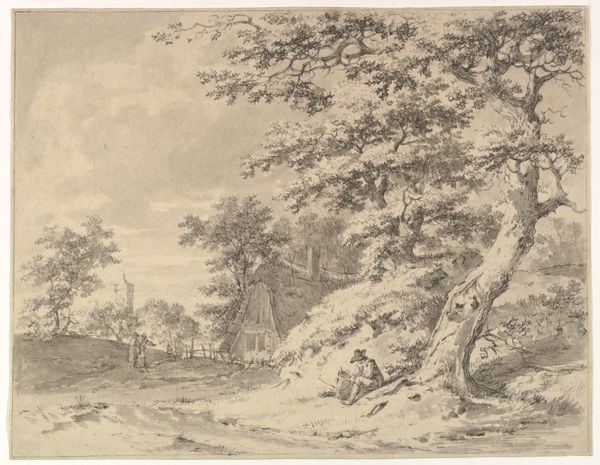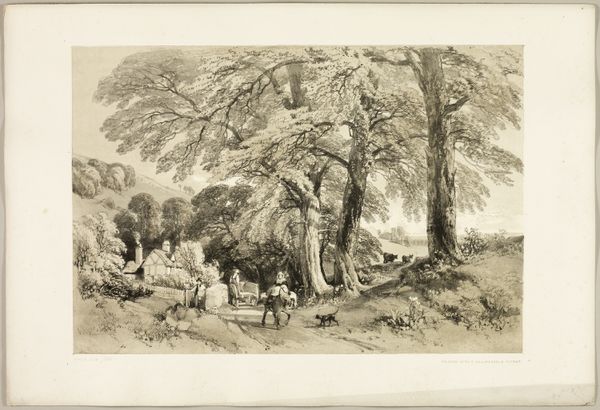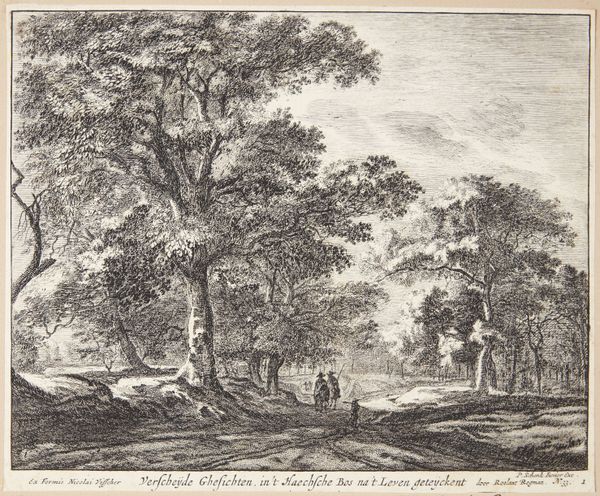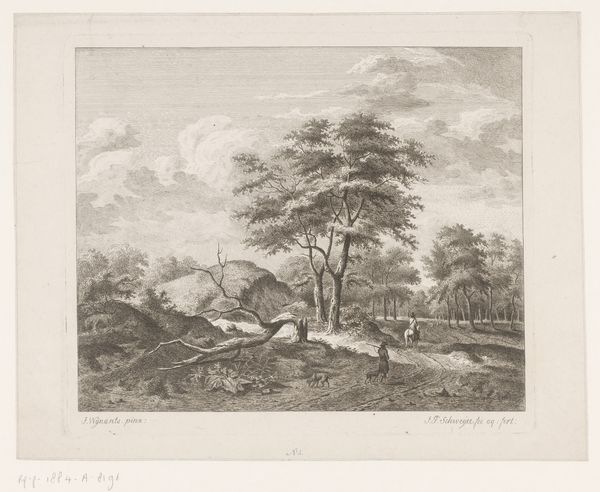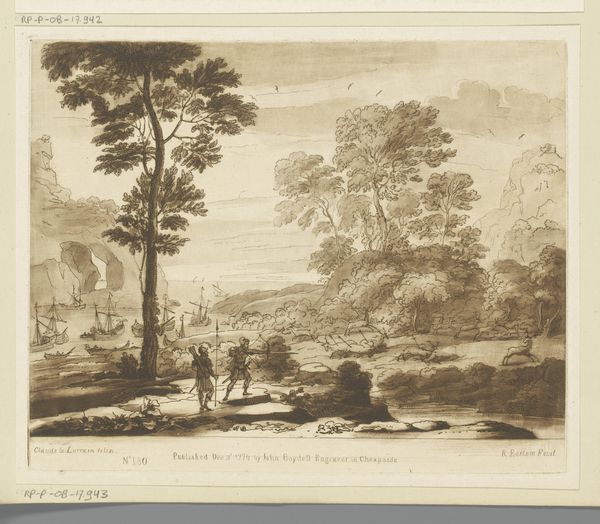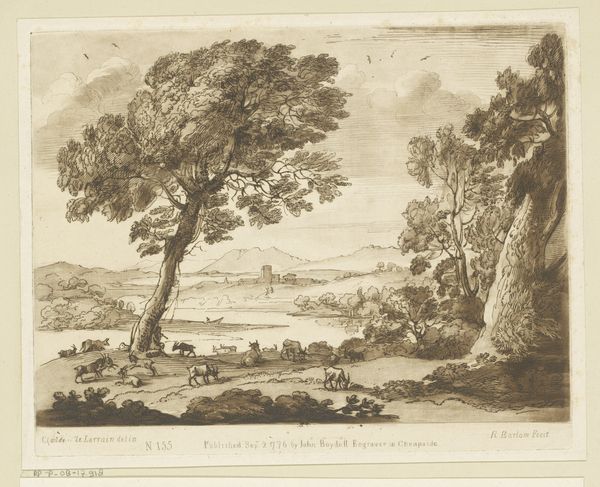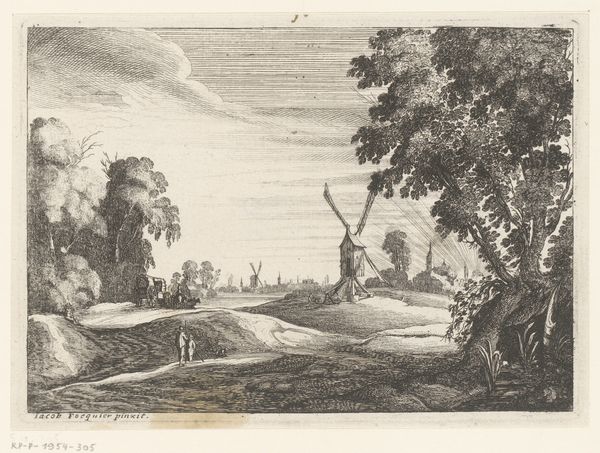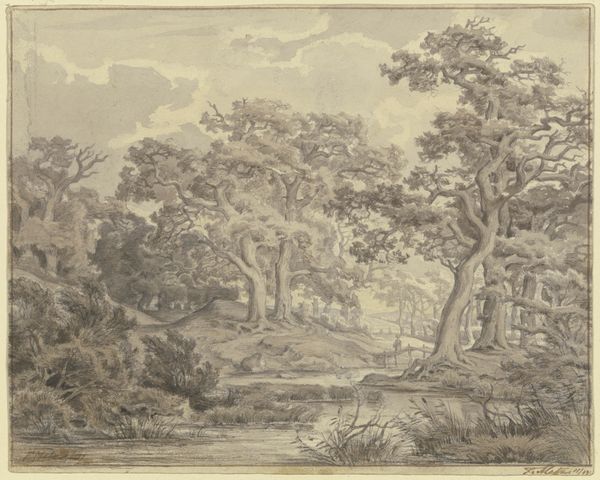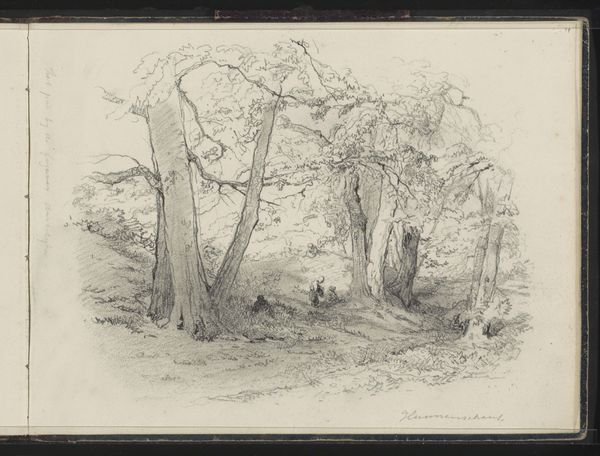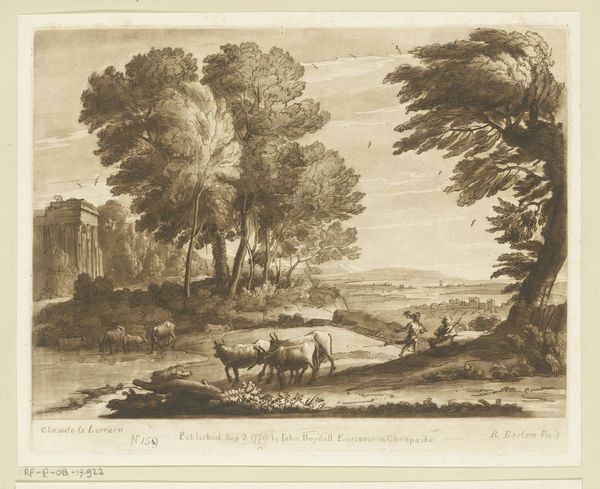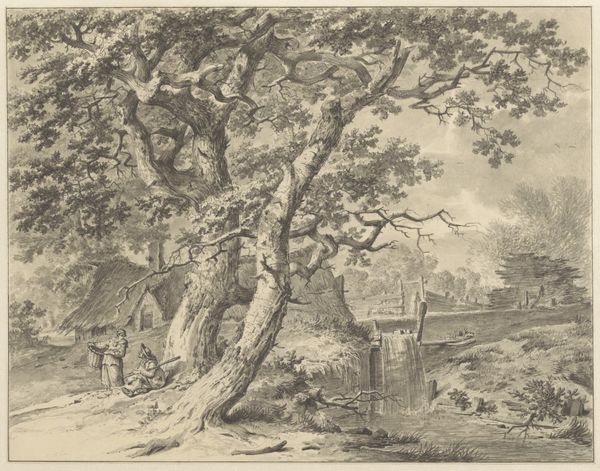
drawing, lithograph, print, paper, ink
#
drawing
#
lithograph
# print
#
landscape
#
paper
#
ink
#
romanticism
Dimensions: 289 × 394 mm (image); 369 × 541 mm (sheet)
Copyright: Public Domain
Curator: I am immediately struck by the somber stillness that pervades James Duffield Harding's lithograph, "Yew, from The Park and the Forest," created in 1841. It has this really arresting Romantic feel. Editor: You're right. This Romantic sensibility you mention can easily be discerned. But what immediately stands out to me is the compositional structure – the colossal yew tree anchoring the entire scene, its form echoed and contrasted by the architecture in the background. I mean, just look at how he handles scale to make that statement! Curator: Indeed, and yew trees themselves hold significant cultural weight. For centuries, they've been associated with mourning, immortality, and sacred spaces in many European traditions, often planted in churchyards precisely for their symbolic connection to both life and death. Editor: So that location carries more meaning. But formally, note how Harding utilizes the monochromatic palette to unify the contrasting textures - the rough bark, the feathery foliage, and the weathered stone. It's not just a symbolic representation of nature's resilience; it's an exercise in textural contrast! Curator: It becomes, therefore, this powerful emblem of remembrance and resilience, suggesting that life and faith persist even in the face of mortality. The presence of figures around what appears to be a burial makes me think it must reference loss or some type of transition, the old meeting the new. Editor: Consider the application of the lithographic technique, too. Harding expertly leverages the medium to achieve a remarkable range of tonal values. From the dense shadows cast by the yew to the softly gradated sky. He shows masterful technical understanding as he generates pictorial depth and an emotional aura. Curator: For me, the work is more about invoking a feeling— a contemplation of the past—and this work succeeds through the power of suggestion inherent within those familiar symbolic forms. It feels quite like wandering through a collective cultural memory. Editor: I see it instead as Harding carefully deploying visual strategies that pull us, with great artistry, into the deeper implications. The strategic use of chiaroscuro, as well as the deliberate play between organic and geometric shapes is not just a composition - its symbolic language. Curator: A stimulatingly structural view that provides us with greater ways of accessing some cultural meaning from a time capsule! Editor: Precisely. Looking closer only enriches its historical story and amplifies, as well, how its message survives over time!
Comments
No comments
Be the first to comment and join the conversation on the ultimate creative platform.

